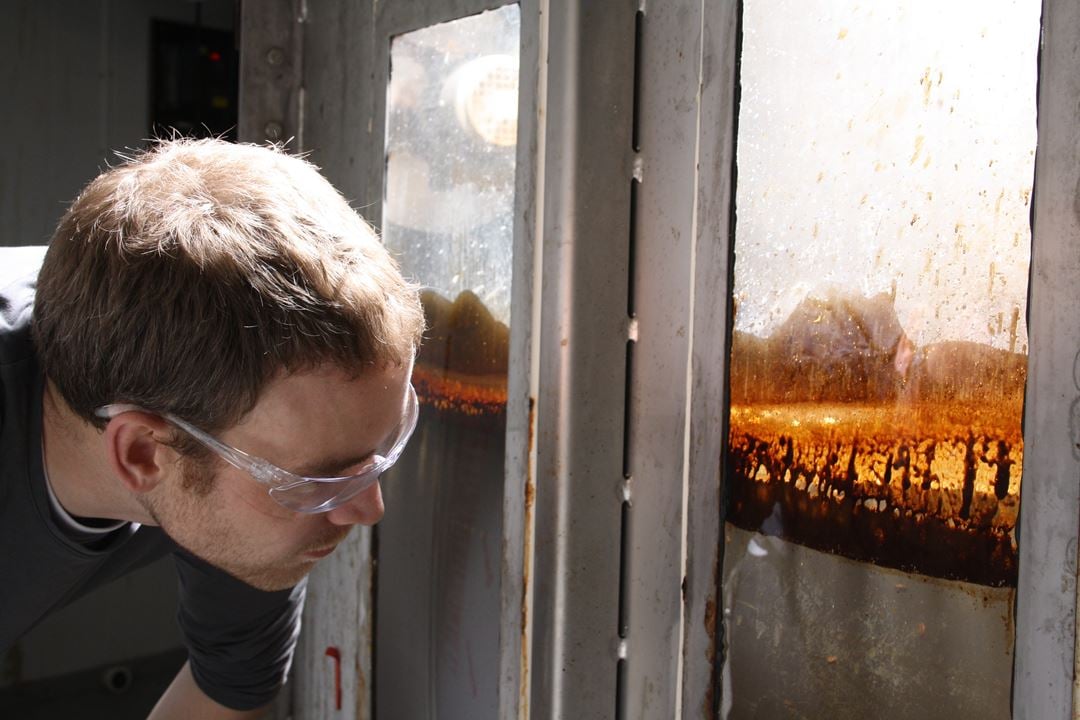Dynamic and static test basins/systems
Renna lab:
When we study the effects of weathering on different oils it is important that they are exposed to the most realistic conditions possible. One of our laboratory basins is equipped with a unique, custom-designed, climate simulator. Here it is possible to reconstruct the vagaries of nature using advanced technologies to simulate the effects of temperature, ocean currents, wind, sunlight, waves and ice conditions, if relevant, on the behaviour of oil in the marine environment.
The oil/ice basin:
In the laboratory's largest basin we can carry out a variety of meso-scale studies, including tests of oil spill mitigation equipment in sea water, with current velocities of up to five knots and under different wave conditions. It is also possible to test oil spill mitigation technologies under simulated Arctic conditions involving different types of sea ice and temperatures as low as -20 °C.
Tank facility for underwater studies
This tank is used to study oil and gas discharges that occur under water. It is equipped with an advanced system that measures droplet sizes, spread and concentrations resulting from the discharge.
For more information, we refer to our fact sheets "Subsea release of oil and gas" and "Plume modelling with OSCAR/Plume3D".
Oil ignitability
Ignitability tests of oil and oil residues can be carried out using a fuel cell developed by SINTEF (Brandvik et al., 2010). The fuel cell comprises a container filled with seawater to which oil is added on the surface. The container is cooled by means of water through-put, and thermoelements are connected in order to measure the temperature of the flame, oil and water during the experiments.

